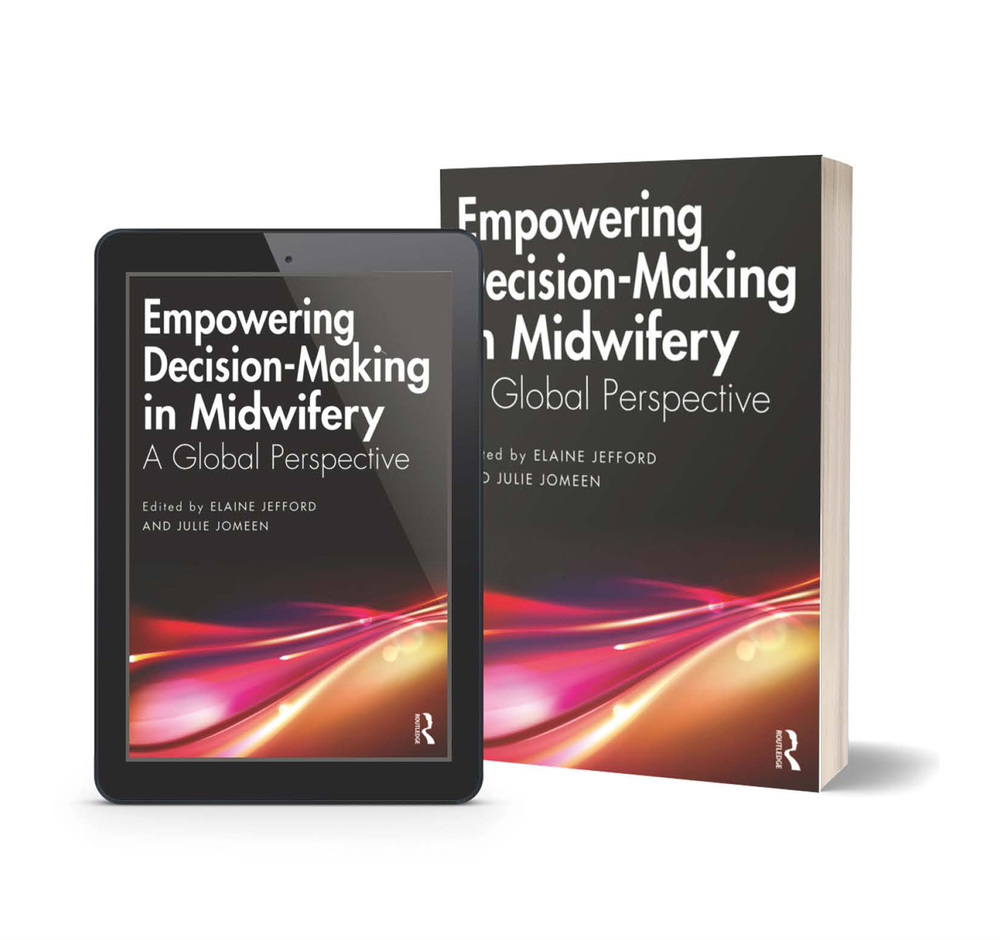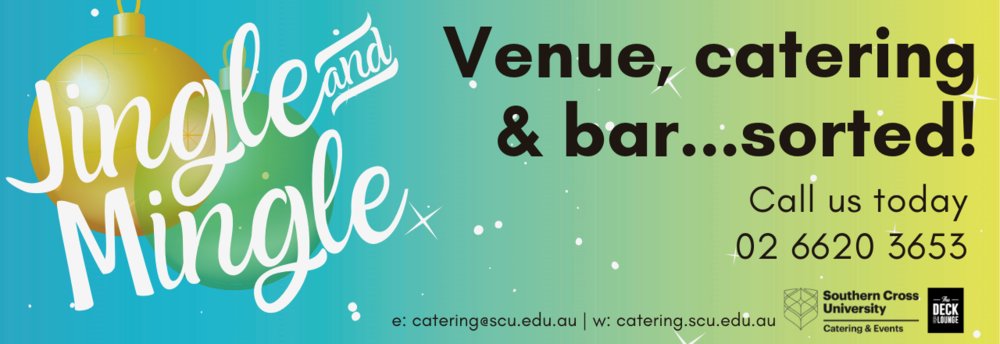SUNDAY PROFILE: Dr Elaine Jefford writes a ground breaking book on midwifery
Liina Flynn
05 October 2019, 9:43 PM
 Dr Elaine Jefford
Dr Elaine JeffordSouthern Cross University (SCU) academic, researcher and author Doctor Elaine Jefford, wants more people to understand that giving birth to children isn’t a medical condition, it’s a natural process.
After more than two decades of delivering babies and teaching student midwives, she’s seen changes take place in how women reclaim their bodies through choosing how they give birth.
As a midwife, educator and a mother, Elaine wanted to help other midwives support women through the childbirth process and gain confidence with decision making and the responsibilities of the role as midwife.
Elaine has just co-authored a book on midwifery - Empowering Decision-Making in Midwifery: A Global Perspective - which will now be used as a text for the growing number of people now studying to become midwives in universities internationally.
It is world’s first exhaustive midwifery decision-making handbook in almost 15 years.
“It’s a beautiful privilege to share the birthing journey with someone,” Elaine said.
“I first qualified as a nurse in 1983 and later became a midwife because I didn’t like how in the health industry, childbirth is seen through a medical lens as a sickness.
“In midwifery, we look at childbirth through a wellness lens. They are well women and birth is a natural event.
“Our philosophy is caring for women and we want women to have a voice in the process.”
Elaine’s experience
Elaine has two children herself and said both of her births were hospital births.
“It was a fabulous experience and I still remember my midwife’s name.
“Giving birth was about what I wanted and my midwife supported me and celebrated me giving birth.
“One of my one births was instrumental (with forceps) and my son was distressed, and my other birth was a vaginal birth – so I’ve experienced both.
“Some women have a fear of childbirth, it’s called tokophobia.
“If women feel they haven’t had a good experience with a vaginal birth, it influences their decisions because they feel it was a traumatic event.
“As a midwife, I am always talking to women, but and refer them to talk to the right people too.”
Midwifery a growing career choice
“Midwifery as a career is not ever going out of style.
“At SCU we are over-subscribed with people wanting to study midwifery.
“Most courses in Australia are full and people are on waiting lists.
“It’s a joy bringing new life into world and you make a connection by being there at the beginning of life.”
Abdicating responsibility – the realisation
“When I was a newly qualified midwife 30 years ago, a lady was adamant she didn’t want an episiotomy (forceps delivery).
“In the end, the doctor wanted to do a forceps delivery.
“I advocated for her and said she didn’t want one.
“But in the end, I passed the doctor the scissors and it haunted me afterwards.
“I abdicated my professional responsibility to the doctor.
“The women wasn’t happy. We can say it’s ok, we got a live baby out of it, but that’s not enough – it’s about the whole birth experience.
“Nowadays it’s common not to do an instrumental forceps delivery.
“In hindsight I should have had a three-way conversation with the woman and the doctor, but I didn’t - partly because I was still in the medical framework mindset I’d been in since I’d become a nurse at 18.
“This led me to want to change my practice.
“It was small steps – it takes a lot of confidence to say to a doctor or someone else, ‘no she doesn’t want this’.
“That’s why it’s not easy to advocate for a woman at times.
“It always needs to be an informed decision between all of us.
“I don’t want to hear ‘your baby is at risk’ – I want to hear what the implications are.
“Things happen rapidly in these situations and we need to make a rational decision with a framework of midwifery and don’t rely on pattern matching from what you did 20 years ago.
Medicalised birth vs natural birth
“Giving birth to a child is a very old practice, but midwives and women all over the world have different expectations.
“In the 1970s, women’s bodies were the doctor’s, but I believe now, we are going full circle back to women claiming their bodies back and as midwives, we need to support them doing that.”
“Women like the idea of having home births more these days.
“On the Far North Coast, more women are choosing to have non-medicalised births.
“And in Australia, there’s a growing population of women choosing to free birth – where they don’t have anyone there.
“They believe the system doesn’t give them what they want and they want to avoid medical intervention.
“Intervention rates are high. About 25-45% of women will have caesarean section. Some are needed and some are for reasons like they want the child born on a certain date.
“I heard a doctor say if I do caesarean, I know I won’t be sued.
“It comes down to money and privatisation of the health system.”
“I have worked with fabulous obstetricians, but the doctor midwife barrier doesn’t fit well with me.
“Midwives are also professionals and need to be accountable to accredited organisational and regulatory bodies, just like doctors do.
“We can’t have mavericks that push the barriers and don’t consult with doctors and birthing women.
“Midwives are accountable, even if it’s a home birth and our job is also to discuss when might be the time to transfer a woman to the hospital.”
Research into decision making
As an university academic, Elaine’s PhD studies looked at decision making in midwifery.
“I interviewed midwives around the state and asked them what is good or can be improved?
“Decision making is a difficult terrain to navigate because we have to professionally account to regulatory bodies and hospitals.
“There has been no standard training in Australia around decision making. Universities all put their own slant on it when they are teaching undergraduates.
“Out of my PhD, I designed a decision-making tool centred in midwifery.
“I wrote an online teaching module and then teamed up with Professor Julie Jomeen from the University of Hull in the UK to write Empowering Decision-Making in Midwifery: A Global Perspective.
“The publisher Routledge emailed me because they felt there was a huge gap in market on the subject.
“The last book written about midwifery was written in 2005 with a medicalised perspective, not centred around decision making within a midwifery philosophy.
“Our new book applies to midwifery globally – we have 38 coauthors from 10 countries so it looks at high income and low income countries
“In lower income countries, like Nigeria, people don’t have access to medicine and midwives need to make informed decisions about different kinds of risks.
“The book looks at regulations in different countries and we have case study examples throughout the book of situations midwives need to consider.

Case study
Elaine said in the book, one of the case studies involved a midwife who was not accredited.
“She met a lady giving birth in a medicalised environment toward the end of labour,” Elaine said.
“They had no rapport and the lady was aggressive because she was left overnight unattended and the midwife hid in a cupboard.
“When she came out, she tried to build a rapport with the woman who had gotten into the bath.
“If a woman has had a caesarean birth before, she before can’t have a water birth – but the midwife chose to not get woman out of the bath.
“She also didn’t call another midwife in – and as a result the water birth baby was potentially compromised, and the mother was not informed of this.
“The outcome was good, but if it had gone differently, the baby could have died.
“The midwife she did right thing because she did what the woman wanted, but she didn’t disclose to the woman the danger in doing so.
“Although birthing women are the final decision makers, they need to make informed decisions.
“It’s ok to be alternative in your birthing choices, as long as you are informed. If she wanted a water birth, it’s ok, but the midwife should have discussed it first.
“As a consequence, she broke hospital policy and professional accountability.
“She could have lost her registration and the mother could have sued her and the hospital for loss of life.
Ethical considerations
“I’d like to push the decision making process into the current consciousness and awareness of midwives.
“Especially when abdication of responsibility can happen so quickly.
“In my research I came up with 48 cases when a midwife abdicated responsibility.
“There was a case of an Indigenous woman in northern NSW who had a track record of recreational drug use.
“She kept coming back to the hospital saying she was unwell and getting drugs. She turned up on new year’s eve in casualty which was staffed by a nurse and a midwife.
“They disregarded what she was saying and never checked the baby. The midwife never listed to baby and they gave the woman panadol and sent her home. In a few days, she and the baby had died.
“Part of what we teach is how to make your clinical reasoning transparent, with consensual checking, so we can justify how we made a decision.
“Decisions don’t always work out. But we need to show our decisions were made as best we could with the knowledge we had – and that we consulted.”
Southern Cross University, has offered midwifery as a distinctive degree at the Gold Coast campus since 2010 and Coffs Harbour campus since 2013.
Dr Jefford’s book Empowering Decision-Making in Midwifery: A Global Perspective is now available as an e-book and hard copy with the official book launch planned for early 2020.
You can order the book here: www.routledge.com/9780367027285
